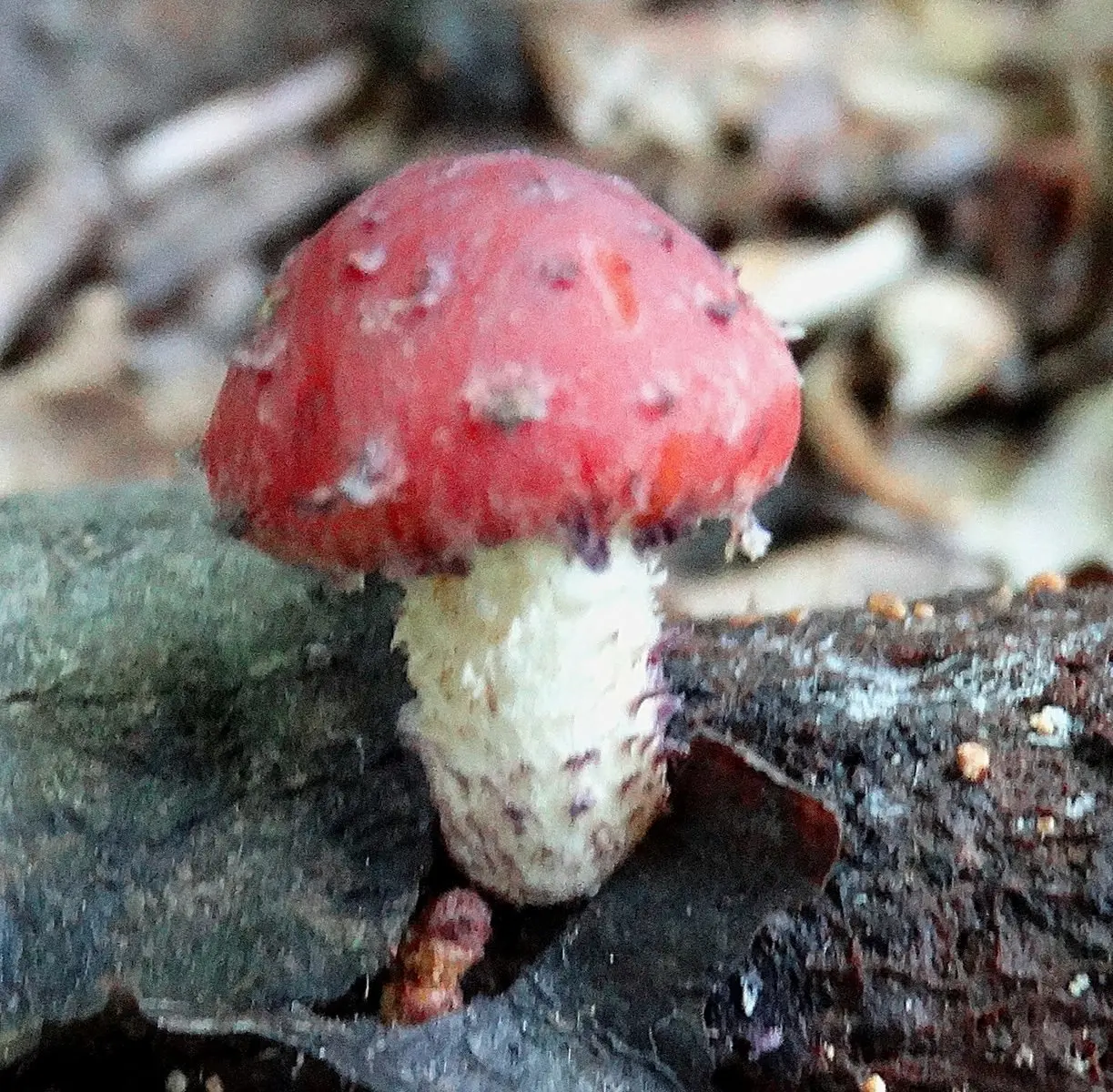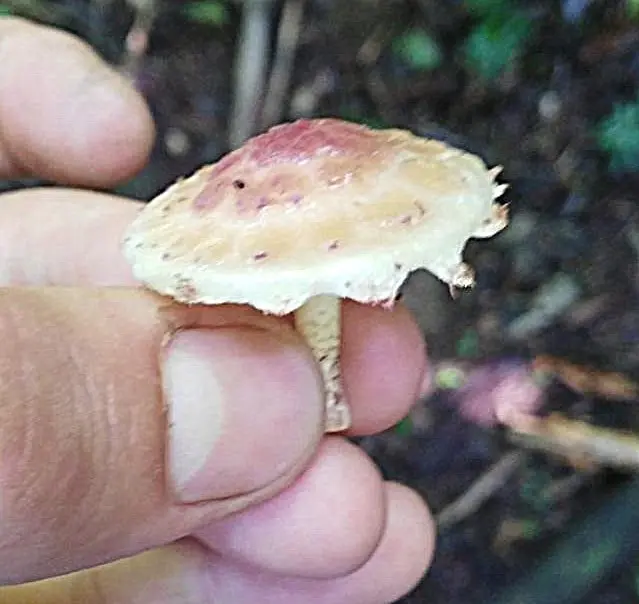Multicolor scale (Pholiota polychroa)
- Division: Basidiomycota (Basidiomycetes)
- Subdivision: Agaricomycotina (Agaricomycetes)
- Class: Agaricomycetes (Agaricomycetes)
- Subclass: Agaricomycetidae (Agaricomycetes)
- Order: Agaricales (Agaric or Lamellar)
- Family: Strophariaceae (Strophariaceae)
- Genus: Pholiota (Scaly)
- Type: Pholiota polychroa (Pholiota polychroa)
:
- Agaricus polychrous
- Ornellus agaricus
- Pholiota appendiculata
- Pholiota ornella
- Gymnopilus polychrous

head: 2-10 centimeters. Broadly domed, broadly bell-shaped with a turned-up margin when young and almost flat with age. Sticky or slimy, smooth. The peel is easy to clean. Young mushrooms have numerous scales on the surface of the cap, forming concentric circles, mostly creamy whitish-yellowish, but may be darker. With age, the scales are washed off by rain or simply move away.
The color of the cap varies in a fairly wide range, several colors may be present, which, in fact, gave the name to the species. In young specimens, shades of olive, reddish-olive, pink, pinkish-purple (sometimes almost completely the same color) are present.

With age, yellowish-orange areas may be present, closer to the edge of the cap. The colors gently blend into one another, darker, more saturated, in red-violet tones in the center, lighter, yellowish – towards the edge, forming more or less pronounced concentric zones.
Among the many colors that may be present on the cap are: pale grass green, blue-green (“turquoise green” or “sea green”), dark olive or dark purplish-grayish to violet-gray, pink-purple, yellow-orange, dull yellow.

With age, fading to almost complete discoloration is possible, in yellowish-pinkish tones.
On the edge of the cap there are pieces of a private bedspread, at first plentiful, fibrous, creamy yellowish or nutty in color, resembling an openwork braid. With age, they are gradually destroyed, but not completely; small pieces in the form of triangular appendixes are sure to remain. The color of this fringe is the same list as for the color of the hat.

plates: Adherent or adnate with a tooth, frequent, rather narrow. The color is whitish-creamy, pale cream to yellowish, yellowish-grayish or slightly purple in young scales, then becomes grayish-brown to purplish-brown, dark purplish-brown with an olive tint.
Ring: brittle, fibrous, present in young specimens, then a slight annular zone remains.
Leg: 2-6 centimeters high and up to 1 cm thick. Smooth, cylindrical, can be narrowed towards the base, hollow with age. Dry or sticky at the base, scaly in the color of the veil. As a rule, scales on the leg are rarely located. Above the annular zone silky, without scales. Usually whitish, whitish-yellowish to yellow, but sometimes whitish-bluish, bluish, greenish or brownish. A thin, filamentous, yellowish mycelium is often visible at the base.
Myakotb: whitish-yellow or greenish.
Smell and taste: not expressed.
Chemical reactions: Greenish yellow to green KOH on the cap (sometimes it takes up to 30 minutes); iron salts (also slowly) green on the cap.
spore powder: Brown to dark brown or slightly purplish brown.
Microscopic characteristics: Spores 5.5-7.5 x 3.5-4.5 µm, smooth, smooth, ellipsoid, with apical pores, brown.
Basidia 18-25 x 4,5-6 µm, 2- and 4-spore, hyaline, Meltzer’s reagent or KOH – yellowish.
On dead wood: on stumps, logs and large deadwood of hardwoods, less often on sawdust and small deadwood. Rarely – on conifers.

Autumn.
The fungus is quite rare, but appears to be distributed throughout the world. There are confirmed finds in North America and Canada. Periodically, photos of multi-colored flakes appear on -language sites for the definition of mushrooms, that is, it definitely grows in Europe and Asia.
Unknown.
Photo: from questions in recognition. Special thanks for the photo to our user Natalia.









